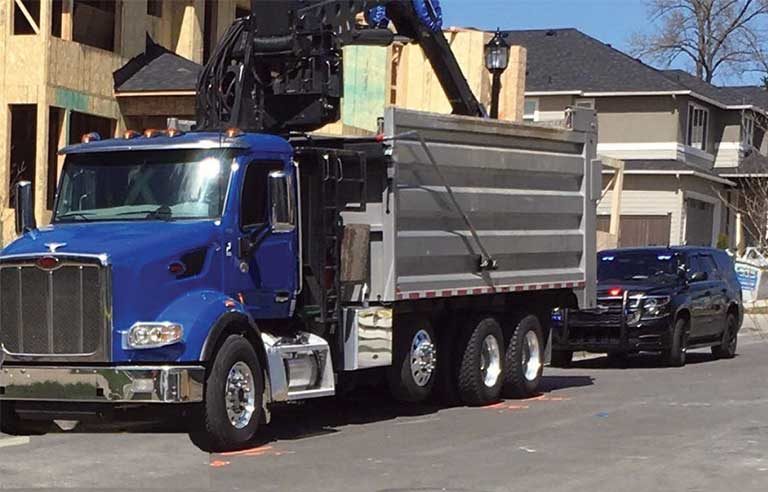FACE Report: Site superintendent run over by backing dump truck

Case report: #71-231-2022
Issued by: Washington State Fatality Assessment and Control Evaluation Program
Date of report: Dec. 5, 2022
A 60-year-old site superintendent working for a housing construction contractor was in charge of directing subcontractors and scheduling dump trucks to haul away debris. Two dump truck drivers employed by a recycling company were emptying dumpsters. While one dumpster was being emptied, a 5-gallon bucket of paint spilled onto the street. The superintendent assigned a subcontractor to get sawdust to absorb the paint and told the drivers he was going to direct vehicles away from it. The drivers entered their trucks to pick up the next dumpster located close to the spilled paint. The driver of the first truck drove out of the alley, turned right and parked on the side of the street near the superintendent. The driver of the second truck then turned left onto the street, checked his mirrors and got a hand signal from the superintendent to begin backing up. As he was backing up, he lost sight of the superintendent and ran over him. It is unknown why the superintendent was in the backing zone, or why the driver could not see him. Although the truck’s backup alarm was working, the truck did not have a backup camera, nor was an observer signaling that it was safe to back up. The truck drivers were not trained on backing up at construction sites.
To help prevent similar occurrences, general contractors at multi-employer jobsites should:
- Continuously assess the hazards of vehicles to workers on foot and ensure hazards are corrected.
- Require workers to wear ANSI Class 2 high-visibility garments when exposed to vehicular traffic.
Employers who use dump trucks should:
- Consider installing pedestrian proximity detection systems on trucks.
- Train drivers that they must use a signaler or backup camera when backing near workers on foot.
- Create and enforce policies that drivers maintain visual contact with workers on foot at all times, and that workers on foot stay out of backing zones unless trained and acting as an observer signaling the driver.
Post a comment to this article
Safety+Health welcomes comments that promote respectful dialogue. Please stay on topic. Comments that contain personal attacks, profanity or abusive language – or those aggressively promoting products or services – will be removed. We reserve the right to determine which comments violate our comment policy. (Anonymous comments are welcome; merely skip the “name” field in the comment box. An email address is required but will not be included with your comment.)

